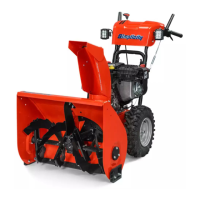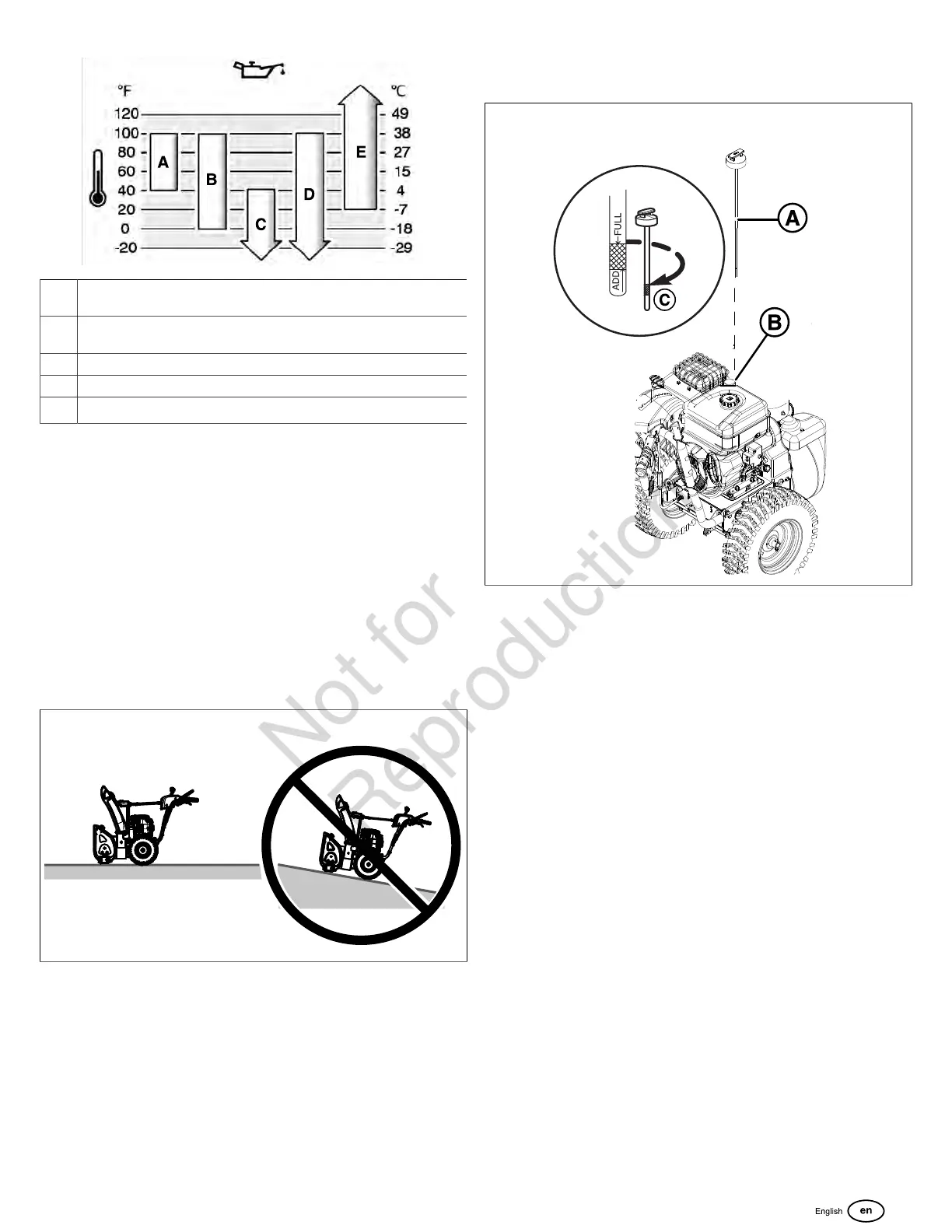7
A SAE 30 - Below 40 °F (4 °C) the use of SAE 30 will result in hard
starting.
B 10W-30 - Above 80 °F (27 °C) the use of 10W-30 may cause
increased oil consumption. Checkthe oil level frequently.
C 5W-30
D Synthetic 5W-30
E
Vanguard
®
Synthetic 15W-50
Check and Add Oil
NOTICE
Some engines are shipped from Briggs & Stratton with or
without oil. Always make sure that the engine has oil.If you
start the engine without oil, it will be damaged beyond repair
and will not be included under the warranty.
UseBriggs & Stratton
®
Synthetic 5W-30 Warranty
Certified oil for best performance. Other high-quality
detergent oils are permitted if classified for service SG, SH,
SJ or higher. Do not use additives.
1. Put the unit on a level surface (Figure 3).
3
2. Remove unwanted material from the oil fill area.
3. Remove the dipstick(A, Figure 4).Use a clean cloth to
remove oil from dipstick.
4. Install the dipstick and tighten. Remove the dipstick and
check the oil level. Make sure that the oil level is at the
top of the FULL indicator (C).
5. If the oil level is below the FULL indicator, slowly add oil
into the engine oil fill (B).DO NOT add too much oil.
6. Wait one minute. Check the oil level again.
7. When the oil level touches the top of the FULL indicator,
install and tighten the dipstick.
4
Fuel Recommendations
Fuel must meet these requirements:
• Clean, unleaded gasoline.
• A minimum of 87 octane / 87 AKI (91 RON). SeeHigh
Altitude Requirements.
• Gasoline with up to 10% ethanol (gasohol).
NOTICE Do not use unapproved gasoline, such as E15
and E85. Do not mix oil in gasoline or change the engine
to operate on alternative fuels. Use of unapproved fuels
will cause damage to engine components, which will not be
covered under the warranty.
To protect the fuel system from gum formation, mix a fuel
stabilizer into the fuel. SeeStorage.All fuel is not the same.
If start or performance problems occur, change fuel providers
or change brands. This engine is certified to operate on
gasoline. The emissions control system for this engine is EM
(Engine Modifications).
High Altitude Requirements
• At altitudes over 5,000 feet (1,524 meters), a minimum 85
octane / 85 AKI (89 RON) gasoline is acceptable.
• For carbureted engines, high altitude adjustment is
required to remain emissions compliant. Operation
without this adjustment will cause decreased
performance, increased fuel consumption, and increased
emissions. Contact a Briggs & Stratton Authorized
Service Dealer for high altitude adjustment information.

